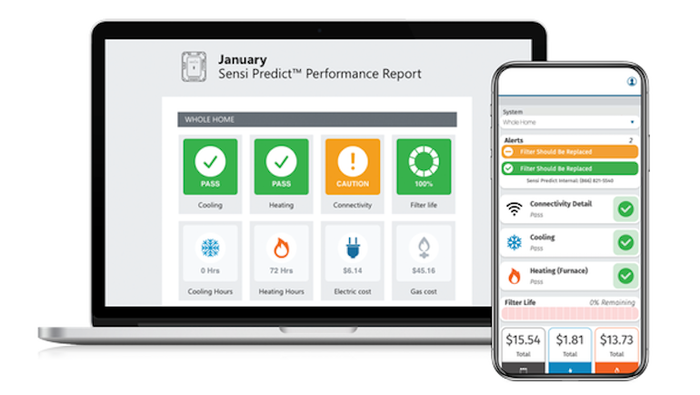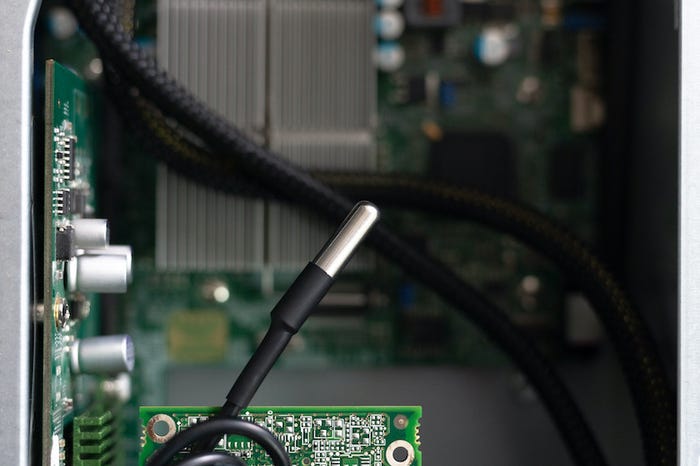Hidden IoT-Enabled Sensors Keep our Temperatures Perfect. But how?
Heating, ventilation, and air conditioning (HVAC) are getting smarter with sensors and IoT innovations.
May 19, 2021

Heating, ventilation, and air conditioning (HVAC) systems represent a worldwide market worth $200 billion a year, reports Statista. Thanks to smart sensors and IoT-related innovations, home, and business owners may now be able to take greater control of their expenses.
Several industry organizations have helped to create standards to enable the IoT-enabled HVAC market. For example, the ZigBee Alliance, a consortium that includes Amazon, Apple, and Google, has pledged to create “service-agnostic” devices by 2021.
One emerging trend is the use of voice-enabled services such as Alexa, Siri, and Assistant to control the HVAC devices in homes and businesses. Another trend is that HVAC systems will use more electronic rather than mechanical components.
But how will these changes take place? Let consider one particular case.
Sensors Abound
HVAC is the technology designed to provide thermal comfort and acceptable indoor air quality for homes, buildings, and vehicles. Traditionally, HVAC systems were heavily mechanical systems. Today, much of the sensing and control mechanisms are electronic. Sensor systems analyze the HVAC inputs and outputs to provide accurate and online control of temperature and air quality. The data generated by the sensors and conditioned by the electronics is used for control purposes but also forms the basis for predictive maintenance.
|
Temperature sensor with electronics. |
Sensors play a key role in modern HVAC IoT-enabled systems. For example, it’s not unusual for there to be ten sensors are installed on a given furnace and air conditioner units. About half of these sensors measure live data, such as the supply temperature of the air coming out of the HVAC system and into the home. A sensor for the return air monitors the temperature of the air coming into the HVAC system from the home.
Another live data sensor monitors the temperature of the liquid line in the refrigerant loop of the HVAC system. Finally, a suction temperature monitors the temperature of the vapor line in the refrigerant loop in the air-conditioning unit.
Sensors are also needed to provide important inputs to unit control systems. For example, indoor control lines connect the HVAC systems control lines to monitor the calls from the thermostat. Similarly, outdoor control lines connect the HVAC condenser unit control lines to monitor what calls are sent to the outdoor unit. There are also indoor sensors to monitor the current draw of the indoor unit. In actuality, current and voltage readings are often part of a power meter device that monitors the actual power and power factor for both indoor and outdoor units.
User Interface
The data from all of these sensor components would be of limited value if not available to the service maintenance technicians or end-user customers. Typically, an IoT application allows an analysis of the status of the system while also providing detailed monthly performance checks. Further, if a component or system failure is detected, then an alert will be sent in real-time.
Modern HVAC systems provide predictive maintenance capabilities. For example, Emerson Electronics’ MySeni program (My.SensiPredict.com) is a homeowner’s portal that provides information about the home’s heating and cooling system. The portal allows users to see real-time data about their system and its performance history, review and compare energy usage and costs over time, and predict maintenance needs. The AI-based program will continue to send email alerts should an urgent issue arise. (Image Source: Emerson Electronics)
The status of the quality of the filter is also available, as is the total energy usage and cost for the current and previous months.
But such modern HVAC system capabilities – be it for home, business or automobiles – are only possible with the sensor and electronic components that make up the smart IoT world.

John Blyler is a Design News senior editor, covering the electronics and advanced manufacturing spaces. With a BS in Engineering Physics and an MS in Electrical Engineering, he has years of hardware-software-network systems experience as an editor and engineer within the advanced manufacturing, IoT and semiconductor industries. John has co-authored books related to system engineering and electronics for IEEE, Wiley, and Elsevier.
About the Author(s)
You May Also Like



.jpg?width=300&auto=webp&quality=80&disable=upscale)


